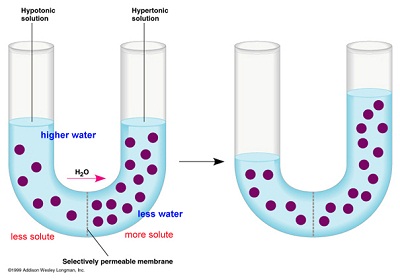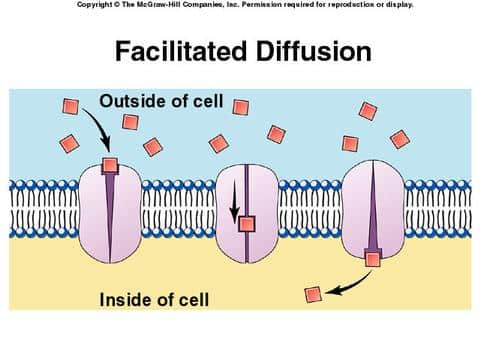Passive transport does not require the use of energy to move material into/out of the cell.
There are two types of passive transport: osmosis and diffusion
Osmosis:
Osmosis is a special type of diffusion; Movement of water along a concentration gradient until equilibrium is established.
In isotonic solutions, the concentration of solute is equal in both the inside and out side of the cell. Therefore, there is no net change in movement of water. This environment is ideal for animal cells. When plant cells are placed in isotonic solutions, however, they are called 'flaccid' and are not as supported by the cell wall.
In hypertonic solutions, the concentration of solute outside the cell is greater. Therefore, solvent moves out of the cell causing it to shrivel. Animal cells become shriveled and plant cells become plasmolyzed.
In hypotonic solutions, the concentration of solute less than inside the cell. Therefore, solvent moves into the cell causing it to swell. This is ideal for plant cells as they become turgid. But animal cells may become lysed and burst.
Diffusion:
Diffusion is defined as the movement of solute molecules from an area of high concentration to an area of low concentration (along a concentration gradient) until equilibrium is established.
Diffusion in cells can be facilitated. This involves the use of transport proteins to move these solute molecules across the membrane. It is still considered passive transport because the particles are moving without the use of energy according to the concentration gradient.


No comments:
Post a Comment